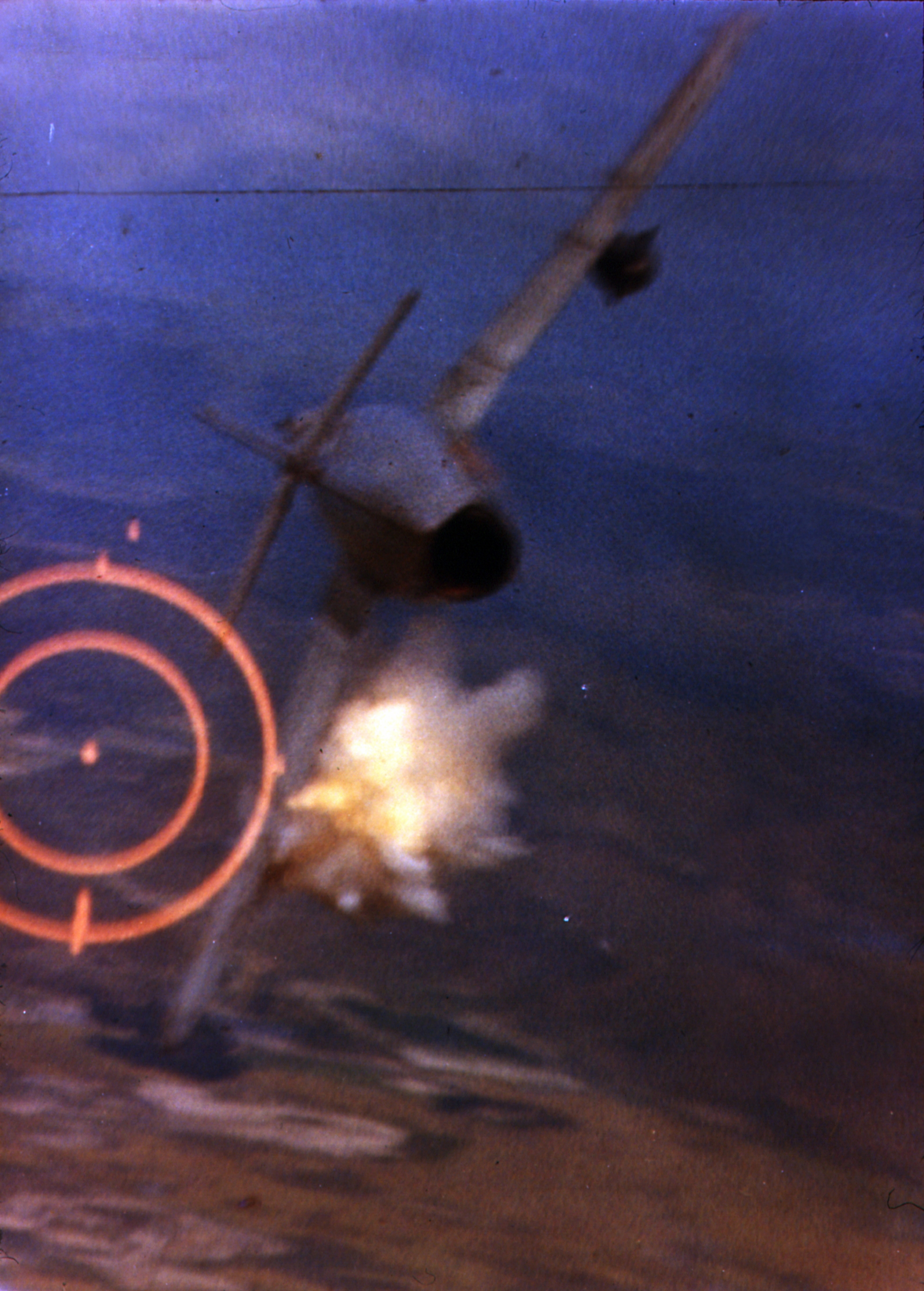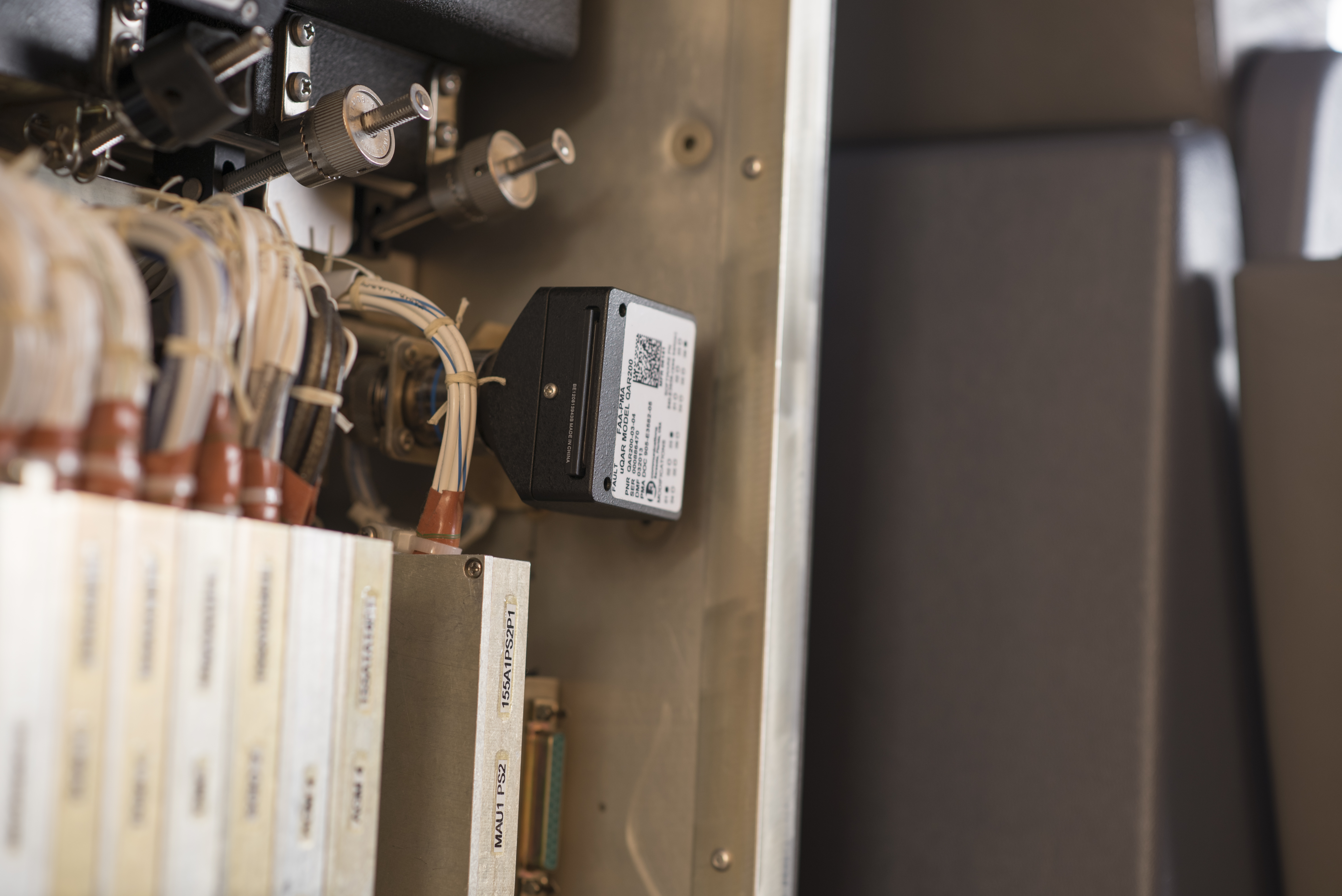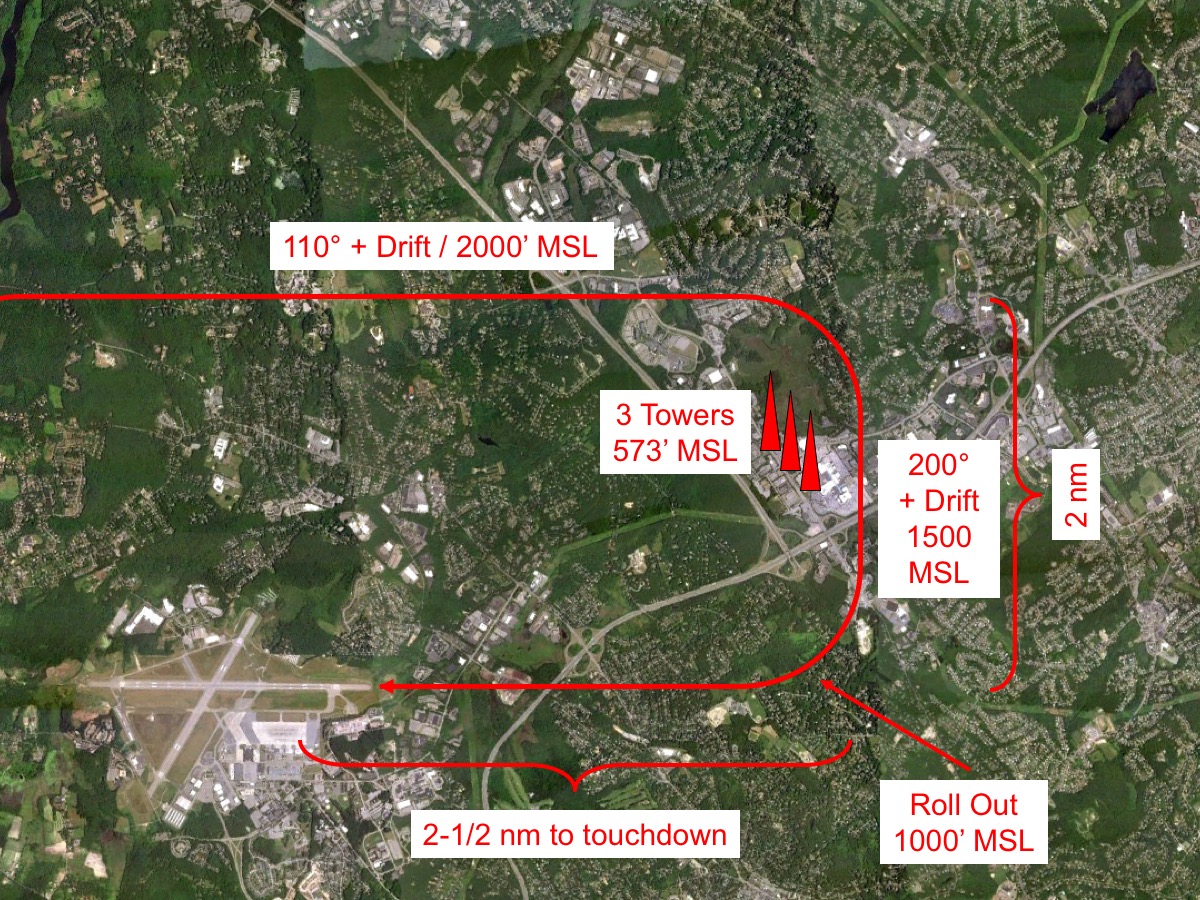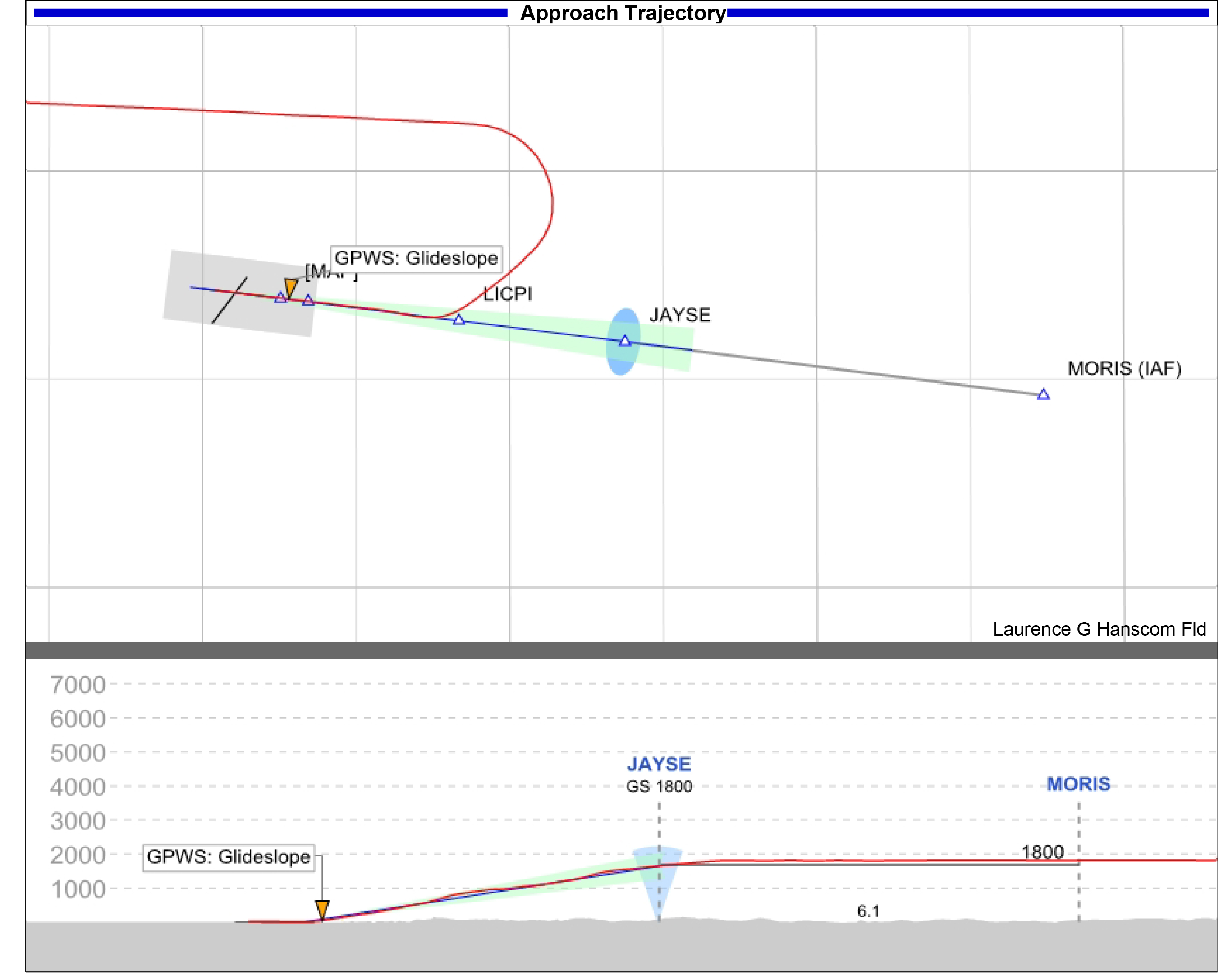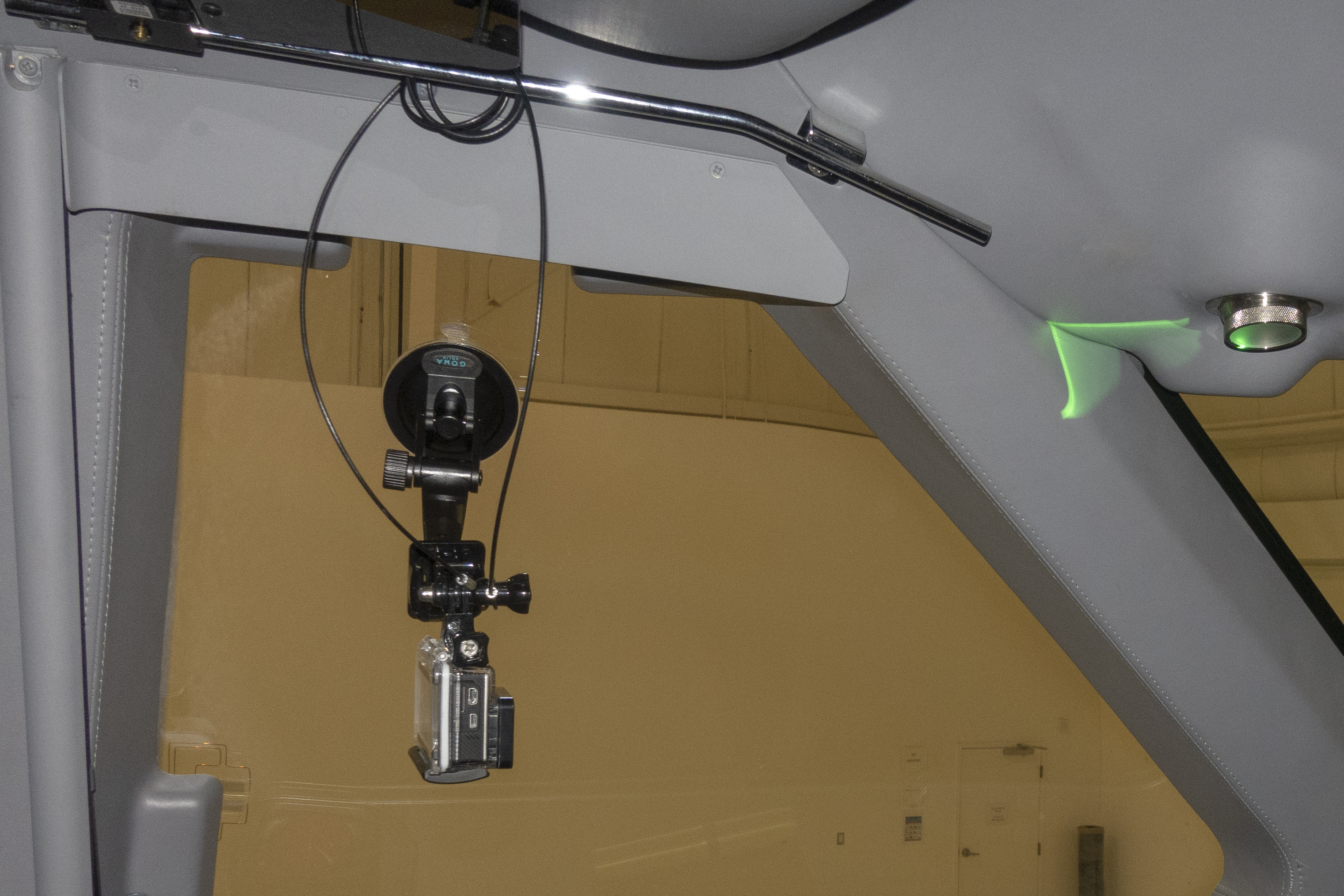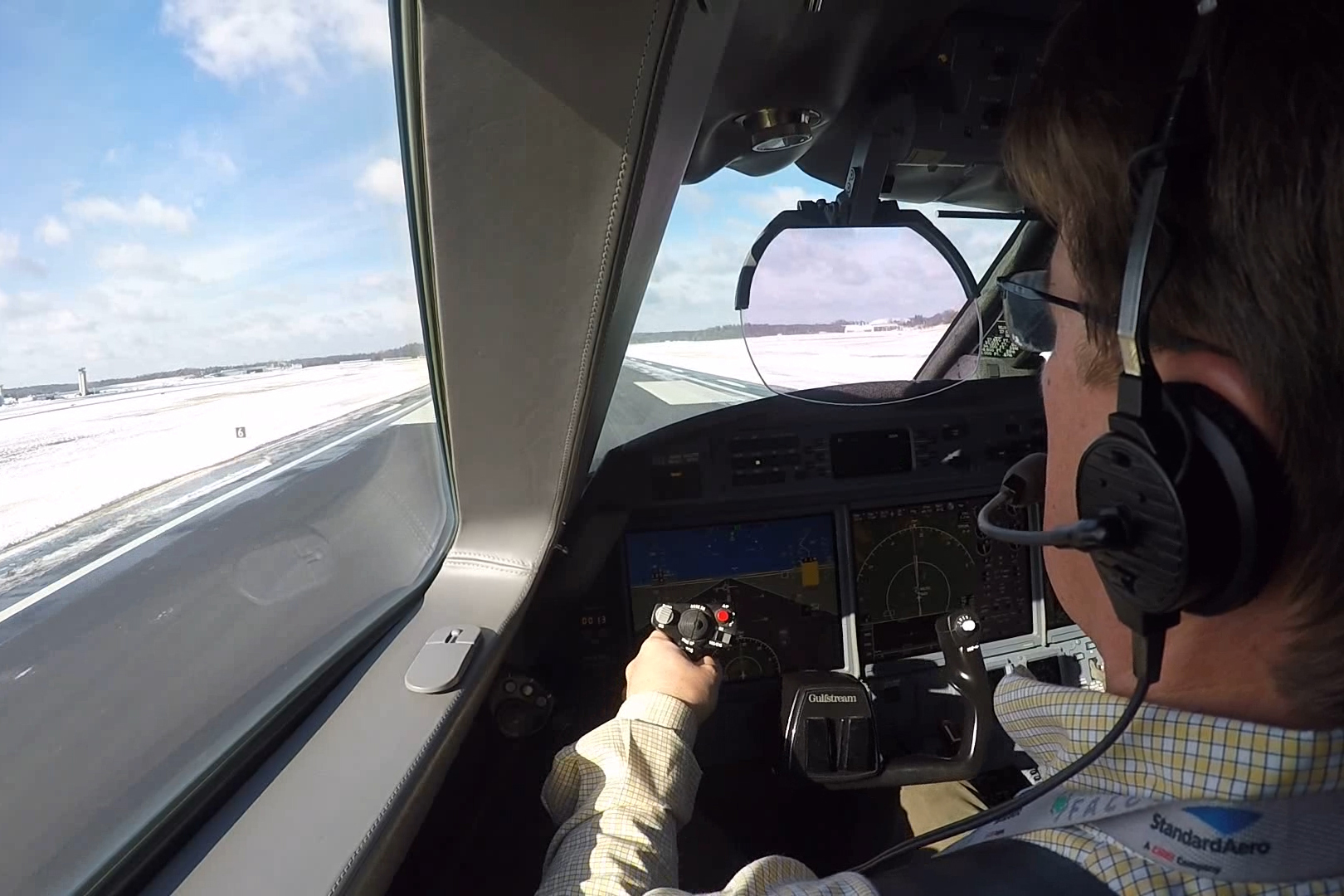If your knowledge of the U.S. Navy Fighter Weapons School comes from the 1986 film "Top Gun," you should begin this article with the thought that very little in that movie resembles the reality of what is now called the U.S. Navy Strike Fighter Tactics Instructor Program. So push those caricatures aside and realize the training techniques used at "Top Gun" are something that can prove useful in your commercial or business aviation cockpit.
— James Albright

Updated:
2018-05-20
By the time I saw the film, I had met two or three graduates of the Navy's Fighter Weapons School. I was impressed by each of them for their sober demeanor, no nonsense approach to flying, and professionalism. The movie struck me as a Hollywood writer's attempt to ratchet up the sex appeal for one segment of the viewership, and the machoism for another. It was all wrong.
A few years after I retired from the U.S. Air Force, I was blessed with the great fortune to fly several trips with a graduate of the Navy's Fighter Weapons School. He prefers to remain anonymous, so let's call him Gordon. I learned a few things about how Top Gun pilots learn, and I think they can be of use to us flying in the more genteel world of flying passengers from Point A to Point B.
I also received a few comments from a former commander of the "Red Force" of the Navy Fighter Weapons School during the Vietnam War era. His notes proved invaluable. But like Gordon and every other Top Gun graduate I've ever known, he is exceedingly modest and prefers to remain anonymous. Humility from such accomplished pilots, I think, is a lesson in itself.
2 — Lessons from Fighter Weapons School
4 — Tools of the debrief: the flight plan
5 — Tools of the debrief: FOQA

1
Gordon
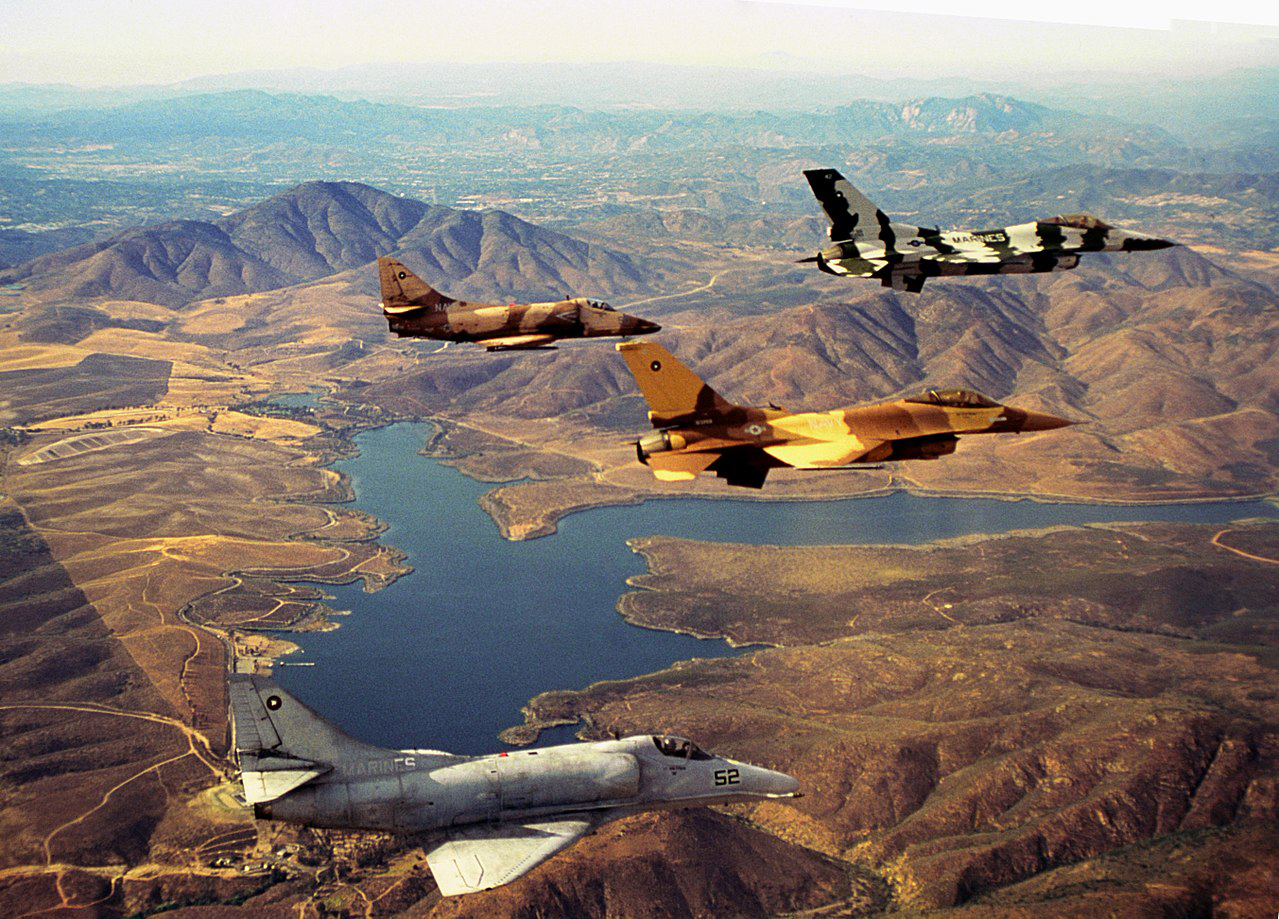
A collection of Naval Fighter Weapons School aircraft over the Lower Otay Reservoir, Chula Vista, California, 1991, (USN photo)
I first met Gordon in the lobby of the Waikiki Beach Marriott. I had flown in from the east coast and he from the west. Another crew was bringing a Gulfstream GV in from New York and we would take it the rest of the way to Australia. Gordon was a retired Navy pilot who flew contract trips for companies like mine, and we relied on contract pilots to do trips like these that spanned the globe. I heard he had spent most of his pilot life in Navy fighters, was new to the Gulfstream, but was a quick study. Dinner that night was pleasant and it seemed he was going to be a good travel companion.
The next day the airplane was on time and we blasted off for Brisbane, Australia. Gordon ran through the checklist in the right seat competently but was full of questions about the plotting charts and every now and then about an HF position report. During our company's mandatory debrief he was all ears about procedures he may have been unclear about or techniques he had never heard of. But at the bar he was more interested in non-flying subjects. Gordon never talked about his Navy career except when asked. He flew the F-4 Phantom II off carriers during the Vietnam War. "Nothing too fancy," he said. The return from Australia was more of the same, but with fewer questions. We gave up the airplane and our passengers to another crew and retreated to the bar at the Waikiki Beach Marriott the day before flying our separate ways home. Unlike our bar time in Australia, Gordon was full of questions about the Gulfstream and oceanic procedures. I have always been a big fan of extensive debriefs at the bar. Gordon took the idea of a bar debrief to the next level.
I found out later that Gordon earned his Navy wings in the early sixties and flew two combat tours in the F-4 off carriers in Southeast Asia. He graduated from the Navy's newly founded Navy Fighter Weapons School in 1969 and returned to the sea aboard another carrier for another combat tour. All told he had nearly 400 combat missions. His next career was as an airline captain. He retired from there and became a Gulfstream pilot. I learned all of this from his Navy biography. As far as he was concerned, it was "no big deal." I thought it was a very big deal and set out to learn more about the school made famous by the movie of the same name. What is it that gives a Top Gun pilot the ability to learn so effectively?
2
Lessons from Fighter Weapons School
The early days of aerial combat were said to be a matter of surviving enough combat to learn what works and what doesn't. The lessons were hardly scientific. Sometime after the Korean War, U.S. Navy and Air Force pilots started applying science to the art and the early days of the Vietnam conflict appeared promising. U.S. fighter pilots tended to best their Soviet-trained North Vietnamese adversaries about two-thirds of the time. But then the North Vietnamese caught on.
In the first half of 1968 the navy ratio dropped to worse than one-to-one. They lost ten aircraft while shooting down nine. That summer they were shut out. Something had to be done. That something turned out to be the establishment of the U.S. Navy Fighter Weapons School, more famously known as Top Gun school. The idea was to train fighter pilots in a more realistic environment to increase their success rate in dogfights.
The three year bombing campaign known as "Rolling Thunder" came to an end in November of 1968 with some concessions from North Vietnam. That meant 1969 was to be a quiet one for the air war and gave the Navy some time to come up with a new cadre of fighter pilots.
Sociologist Anders Ericsson examines the training techniques used at Top Gun under the chapter "Principles of Deliberate Practice" to look for what it takes to get better at complicated tasks.
The navy picked its best pilots to be the trainers. These men would play the role of the enemy North Vietnamese pilots and engage the students in air-to-air “combat.” The trainers, who were known collectively as the Red Force, flew fighter planes that were similar to the MiGs, and they used the same Soviet tactics the North Vietnamese pilots had learned. Thus they were, for all practical purposes, top-notch North Vietnamese fighter pilots, with one exception: instead of missiles and bullets, their aircraft were equipped with cameras to record each encounter. The dogfights were also tracked and recorded by radar.
Source: Ericsson, pp. 115 - 118
Everything was recorded for later examination.
The students who attended the Top Gun [school] were the next best fighter pilots in the navy after the trainers, and collectively they were known as the Blue Force. They flew U.S. Navy fighter jets, again without the missiles or bullets. Each day they would climb into their planes and take off to face the Red Force. In those combats the pilots were expected to push their planes—and themselves—right up to the edge of failure in order to learn what the planes were capable of and what was required to get that performance out of them. They tried different tactics in different situations, learning how best to respond to what the other guys were doing.
Source: Ericsson, pp. 115 - 118
Since the students were under the microscope, mistakes were caught, analyzed, and corrected.
I don’t know how Top Gun is picking the pilots today, but I don’t think the Navy chose the “best” pilots to be either instructors or students to attend Top Gun during my day. I don’t know what ‘best’ means or how one would define it. However, one thing is for sure, when they graduated or were transferred out of Top Gun, they were one of the best. These pilots could not only fly the aircraft to its optimum capability, but more importantly they understood the operational application of air combat tactics and weapons employment. There is no doubt that Top Gun could hone a pilot into a very capable and ‘intelligent’ operator of the aircraft and onboard weapons system.
Source: Anonymous Source
The pilots of the Red Force, being the best the navy had, generally won the dogfights. And the trainers’ superiority only increased over time, because every few weeks a whole new class of students would enter the Top Gun [school], while the trainers stayed there month after month, accumulating more and more dogfight experience as time went on and getting to the point at which they had seen pretty much everything the students might throw at them. For each new class the first few days of dogfights, in particular, were usually brutal defeats for the Blue Force. That was okay, however, because the real action occurred once the pilots landed, in what the navy called “after-action reports.”
Source: Ericsson, pp. 116 - 117
“After action reports” should simply read the “debrief”. The debrief would consist of a list of “Goods, bads, and others”. We would simply list those items that everyone in the flight considered ‘good, bad and other’ - later used as items to be improved upon.
Source: Anonymous Source
This is a hallmark of Navy and Air Force aviation: every training flight is followed by an analysis that may take longer than the flight itself.
During these sessions the trainers would grill the students relentlessly: What did you notice when you were up there? What actions did you take? Why did you choose to do that? What were your mistakes? What could you have done differently? When necessary, the trainers could pull out the films of the encounters and the data recorded from the radar units and point out exactly what had happened in a dogfight. And both during and after the grilling the instructors would offer suggestions to the students on what they could do differently, what to look for, and what to be thinking about in different situations. Then the next day the trainers and students would take to the skies and do it all over again.
Source: Ericsson, p. 117
The film and recorded radar allow the student to relive the training from a higher perspective; almost forcing a detachment.
The debrief was a major part of the training sortie. Here is where the airborne encounter was dissected and both the instructor and student were able to provide inputs into what they saw and why they did what they did. Important aspects of the debrief usually included the following general topics:
- Spatial awareness - how many ‘bogies’ are there and where are they coming from?
- Situational awareness - when did we get a visual "tally ho" and were we able to maintain sight of the bogies throughout the fight?
- Flight discipline - mutual support of flight integrity. Did we fight as a team or was the opponent able to break the formation into two separate fights?
- Energy management - understanding your own energy state and also the energy state of the opponent.
- Weapons employment - was I able to maneuver the aircraft to get a ‘solution’ to fire the onboard weapons?
- Understanding opponent’s capabilities, both aircraft capabilities and onboard weapons capabilities.
- Did we stay within the ‘rules of engagement’ - honoring the “hard deck” and airspace boundaries?
- Where do we need to improve?
Source: Anonymous Source
Over time the students learned to ask themselves the questions, as it was more comfortable than hearing them from the instructors, and each day they would take the previous session’s lessons with them as they flew. Slowly they internalized what they’d been taught so that they didn’t have to think so much before reacting, and slowly they would see improvement in their dogfights against the Red Force. And when the class was over, the Blue Force pilots—now much more experienced in dogfighting than almost any pilot who hadn’t been to Top Gun—returned to their units, where they would become squadron training officers and pass on what they had learned to the other pilots in their squadrons.
Source: Ericsson, pp. 116 - 117
The ability to self-critique is key to continued improvement.
[The] air war resumed in 1970, including air-to-air combat between fighters. Over the next three years, from 1970 to 1973, U.S. Navy pilots shot down an average of 12.5 North Vietnamese fighter planes for every U.S. Navy plane that was lost. During the same time, air force pilots had approximately the same two-to-one ratio they had had before the bombing halt. Perhaps the clearest way to see the results of the Top Gun training is to look at the “kills per engagement” statistics. Throughout the entire war, U.S. fighters downed an enemy jet an average of once every five encounters. However, in 1972, which was the last full year of fighting, Navy fighter pilots shot down an average of 1.04 jets per encounter. In other words, on average, every time navy pilots came in contact with the enemy they would down an enemy plane.
Source: Ericsson, pp. 116 - 117
3
Effective debriefs
A debriefing in an Air Force or Navy squadron can be merciless. Pilots rarely spend more than three years at an assignment and are usually upgrading from one position to another. Pilots are never static, they are always moving to the next level. In such an environment, pilots learn to critique themselves before anyone else has a chance. This effort at self-critique not only improves "the self," but improves the ability to provide meaningful critiques to others.
As civilians flying for flight departments that hope to keep the same set of pilots for years and years, the upgrade chase ends relatively quickly. Pilots become familiar and personal relationship can become lasting. The merciless critique is not only unwelcome, it can be detrimental to the smooth operation of the flight department itself. There is great pressure to ignore another pilot's long landing. "We all make mistakes," becomes the ongoing excuse. If we can't expect critique from others, then it will have to come from within. If you are in a leadership position, this is especially important. If the boss is unwilling to provide a critical assessment of his or her own performance, nobody else will either.
There is a right way to do this and, inevitably, a wrong way. In one of my Air Force squadrons we called this "self immolation," something like the ancient Samurai warrior pulling out the short sword and ending his shame in front of the shogun. Don't do that.
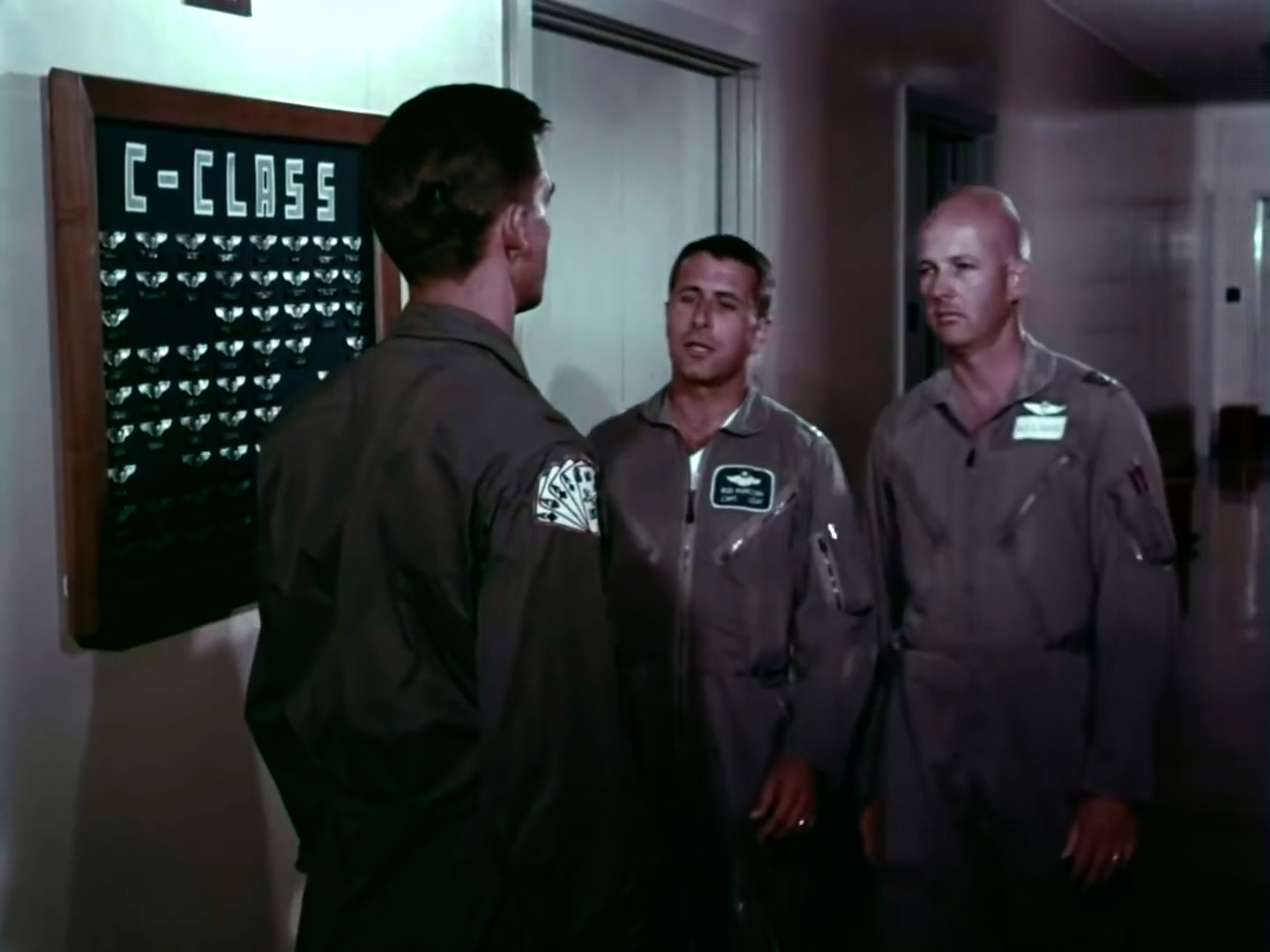
USAF Undergraduate Pilot Training student with instructors, "The Year of 53 weeks" (USAF Film)
Interesting (to me) fact: The student is a member of "No Loss" flight, so was I.
How to Self-Critique
I am sure there are many ways to do this, here is what has worked best for me:
- Reconstruct the flight chronologically
- Cover problems factually, without editorializing
- Unleash your inner Rembrandt
- Offer corrective advice and solicit opinions
- Use video cameras to examine "target" events
- End on a high note
This allows you to cover the good and bad, as if it is just a matter of routine. It also gives your fellow crewmembers to offer their own self-critiques for the sections you deem "good" because they didn't involve an error on your part. If the other crewmember wants to contribute, listen politely and offer help if requested. See: Tools of the Debrief: The Flight Plan.
Note "what" happened. Cover the "Why" only if you are sure, preface your explanation with a qualifier like "I think" if you are unsure. Where you don't know what happened or there is a divergence of opinion, a FOQA system can help. See: Tools of the Debrief: FOQA.
Sometimes a hasty drawing can illuminate the problem and the solution all at once. It can also stimulate discussion. For an example, see: A "Top Gun Culture".
If you made the mistake, offer what you think can solve things in the future. Give others a chance to contribute, but don't reject ideas flatly. That risks shutting down all further instruction. If you are the senior pilot, if you have an official role as an instructor or other training officer, or if you have a position of authority where junior pilots look to you for guidance, things change a little. You can give more direct instruction because it is expected (and should be appreciated). But diplomacy and tact are still important.
As transport category pilots without gunsights or the need to maintain position in formation, the area where stick and rudder skills seem to need the closest examination is departing and arriving from a runway. Did you track centerline? Did you float past the touchdown zone? An inexpensive camera on a secure mount can answer these questions dispassionately. See: Tools of the Debrief: Video
No matter how the discussion progressed, you should make sure it ends positively. "We'll never do that again!" works better than "we sure blew it today!"
I recommend keeping a written diary of your own critiques. The ritual of writing these things down will elevate the importance of these self-critiques, even if only subconsciously. After a while, this diary becomes a self-motivational tool that cements in your mind that you can and have improved your skills as a pilot.
4
Tools of the debrief: the flight plan
After a one hour hop from White Plains to Teterboro, it can be easy to forget what happened during the preflight, engine start, or even during the takeoff. Now try to remember all that stuff after a fourteen hour flight to Tel Aviv. As an Air Force instructor pilot I often flew with a kneeboard and kept a running log of notes to remind myself what needed covering during the debrief. You can still do that, but there are easier ways.
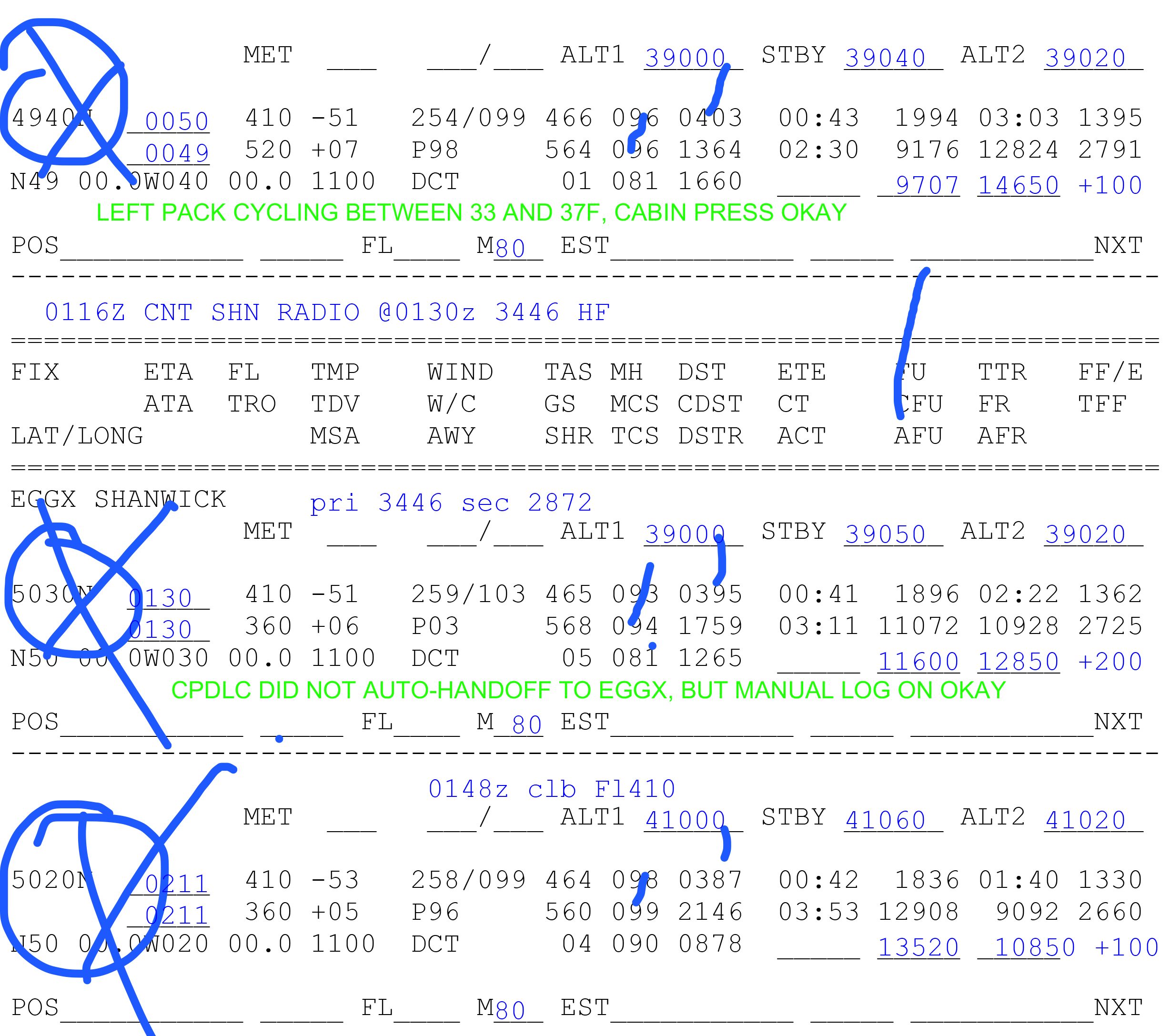
Debrief notes on a master document on the ARINCDirect App.
Note: Using two iPads linked by Bluetooth, the PM's annotations are in blue, the PF's are in green.
Flight Plan Diary
When we fly oceanic or over remote areas, we are required to maintain a "master document" flight plan. We either have it in paper form, usually on a clipboard, or in our iPads. Either way, we are supposed to enter times, fuels, and other data so as to reconstruct the flight should anyone want proof that we did all this in accordance with ICAO and FAA directives. On a domestic flight, we are more likely to tuck the flight plan away once we've recorded our domestic ATC clearance, never to be seen again. In either case, the flight plan would make an excellent place to record notes about the conduct of the flight. Among the things you should make record of:
- Clearances (including any confusion or challenges with ATC)
- Forgotten or improperly applied checklist steps
- Procedural confusion (with aircraft systems, air traffic control, or other standard operating procedures)
- Mechanical and software problems noted in the aircraft or any loose equipment
- A qualitative judgment on how well (or poorly) departure, arrival, approach, and landings were flown
I recommend you make a practice of pulling out this paper or electronic document for every post-flight debrief. Even if you didn't make any notes, it will serve as a reminder of where you flew and when, helping to guide your debrief. Here is an example from the flight shown above.
- PIC: "We had an uneventful preflight, though loading an extra 2,000 lbs of fuel combined with nine pax could have been an issue. The predicted ISA was about right so we didn't have any problems climbing. The fact the passengers showed up four hours late worked in our favor too."
- SIC: "Filing for FL 390 gives us a lot of options, so the ISA wasn't a problem. But the gas in Paris is expensive and we landed with 6,000. Maybe we could have gone with a thousand pounds less."
- PIC: "That makes sense. We'll watch that in the future. We got our oceanic via datalink, just as filed. Coast out was a piece of cake. On our last trip we forgot to squawk 2000 until 30 West, we remembered this time."
- SIC: "Having it on the master document checklist helps."
- PIC: "Everything was okay over the pond except our datalink handoff from Shanwick to Gander."
- SIC: "Funny how we got CYQX in the 'next center' block early but lost it just a minute before 30 west."
- PIC: "I've seen that before. We managed to log in manually with seconds to spare. I'll look into this."
- SIC: "That's right about when I started noticing the pressure fluctuations in the left pack."
- PIC: "I let maintenance know. The mechanic said it may be time to change the pack filter. I think coast in and the switch to domestic was uneventful. Did you notice anything?"
- SIC: "No, everything was great, even the pattern was empty by the time we got in."
- PIC: "Yeah, it was a nice stable approach. Our taxi was a little long because we had to go to customs, but that didn't take very long. All things considered, it was a nice flight."
- SIC: "Nice flight."
5
Toolds of the debrief: FOQA
Even the best fighter pilot can miss "the big picture" when dealing with other aircraft in a dynamic air-to-air engagement. A ground based radar is often used in training ranges to help pilots dissect a battle from start to finish, providing an invaluable and objective lesson for all participants. Technology has improved since the early days of Top Gun so that airborne radar platforms provide the same ability for actual engagements with an enemy.
Having a radar plot of every flight where things don't go as planned would be a great learning tool for us flying transport category airplanes, but would obviously be impossible to pull off logistically. But we do have the next best thing.
I cannot recommend a FOQA system highly enough. A Flight Operations Quality Assurance (FOQA) system extracts data from your Flight Data Recorder (FDR) and provides an in-depth analysis of any events that exceed established parameters. Of course it is up to you to read the report and come up with your own conclusions. I thought I was a pretty good pilot before FOQA. FOQA has made me better.
The FOQA system is normally a very small electronic component that records the data being sent to your FDR. In fact, that is what that electronic gizmo is called on some aircraft, a "Quick Access Recorder." You can learn more about the system under AC 120-82. For a Gulfstream G450, the QAR cost us $10,000 to install and the program costs about $6,000 per year.
Over the years the FOQA system taught us that we were not flying stabilized approaches when flying visual patterns, that we often ducked under a stabilized glide path on shorter runways, and that sometimes we stop more abruptly than we need to. In each case, we thought we were doing everything right, but FOQA showed us where we needed to improve. Perhaps the best way to illustrate this is with an example of the very first FOQA report we got after initial installation.
If you've ever flown a visual approach to Runway 29 at Hanscom Field, Bedford, Massachusetts, you will have seen the three towers abeam a 2-1/2 nm final, just to the north. I had always flown my base just inside the towers, allowing me to roll out at 2 miles and about 600 feet for a nice, stable final approach. Or so I thought.
Everything had to be just right to make a roll out at 2 miles and 600 feet, and things rarely work out "just right." I heard from another Gulfstream operator that the FOQA didn't like you joining the ILS below the glide path so your choices were to ensure the ILS wasn't tuned or to ignore the FOQA report. So that was my plan until I got our first report.
We were actually joining the glide slope at 400 feet and sometimes as low as 300 feet. The effort often ended up in a very sloppy looking pattern. We worked this through our SMS program and came up with the conclusion that flying outside the towers only added a half mile but made the entire pattern much safer. We no longer have a problem getting a stable approach on a visual to Runway 29 at Bedford.
The experience taught us to be more open to looking at what we have always assumed was the safest way to do things, especially when FOQA begs to differ.
6
Tools of the debrief: video
The air combat arena moves quickly and it may be impossible to reconstruct without gun camera footage to really nail down what had happened during the seconds and minutes of an engagement. Fighter pilots are well schooled at looking back at a "1 v 1" or "2 v 2" (or even a "2 v many") to see what went wrong, what went right, and where things could have been improved.
For us, flying jets onto stationary slabs of asphalt and concrete, the task is simpler but the opportunity for improvement remains. Take, for example, the need to put the airplane down onto the touchdown zone, on speed, on centerline, off a stable approach. The ten seconds before and after touchdown happen so quickly we can miss the errors. An inexpensive "GoPro" camera can be safely mounted over the pilot's shoulder and can provide invaluable feedback you may not be able to get otherwise. But you have to look at the results with an analytical (and critical) eye.
There are several self-contained cameras with wide angle lenses that are suitable for the task of recording your takeoffs and landings. Most of these are classified as "action cameras" as opposed to video cameras. The distinction isn't important, except that the former usually is limited to 20 minutes of record time, while the latter will record for as long as the memory card and battery will last. But before you embark on your cockpit film making career, a few cautions are in order:
- Ensure the camera is securely mounted. I've seen various clamp set ups that seem to work. The most popular solution is a suction cup that affixes to the side windows to look forward.
- No matter how you mount the camera, add a strap to catch the camera in case it falls. You want to ensure a falling camera doesn't hit anything to activate a switch or button or, even worse, jam a control. There have been a few accidents over the years where a larger camera became lodged against a control stick. I worry about the camera getting in the way of the nose wheel steering tiller. A good strap can limit the damage to the camera itself.
- Keep the "big picture" in mind when framing your shot. The purpose of this camera is not to show your fan club how it is you are able to land that massive airplane on that small little runway. The purpose is to record a stable approach that ends in the touchdown zone of the runway with a controlled deceleration; and if the results fall short of that, the video should help you figure out why.
Once you have your video you need to look at it with a critical eye.
Here is an example of a well executed landing in a Gulfstream G450: GoPro landing at Bedford, final few seconds.
If you have a Runway Awareness and Advisory System (RAAS), you will be able to apply science to your analysis. Here are a few things to look for:
- Is the aircraft on the correct glide path, on extended centerline?
- As the aircraft crosses 100 feet above the landing surface, it should be one-third of a nautical mile from the touchdown point (about 2,000 feet). If you have a 1,000 foot overrun, for example, you should just be crossing the start of that overrun.
- As the aircraft crosses 50 feet, you should be just crossing the runway threshold.
- At 10 feet above the runway, you should have a good look at the touchdown zone right in front of you.
- The time between that 10 foot call and touchdown should not exceed three seconds. At 120 knots you are covering 202 feet per second. A three second flare consumes 606 feet at that speed and can take your well outside the touchdown zone.
- The flare should be one, smooth, continuous pitch up for most aircraft.
- The roll-out should be on centerline.
7
The "Top Gun" culture
There is a lot to take away from the way pilots train at Fighter Weapons School to become "Top Guns." If you can learn from a cockpit mounted camera, that's great. But is certainly isn't a necessity. If you can install a FOQA system that's even better. In my book, it is a necessity. But the most important thing to take away from all of this is the culture of self-critique. You have to be willing to continually monitor your own performance and look at it critically.
An Example
This may seem a trivial example. I've picked this one because it is the most recent and it illustrates a point I shall cover at the end.
Me: "The departure from Chicago was fairly routine, though I started my turn lower than 400 feet because of the restriction to complete the turn within a mile of the departure end of the runway."
The other pilot: "I think we made the restriction with plenty of margin."
Me: "I think so too, but had I been more deliberate about getting the nose up on initial rotation, we would have made 400 feet sooner without consuming so much forward distance and the whole thing would have been a non-issue."
The other pilot was being generous but I was happy to have the issue brought up. It would cement the need to get the nose up in my own mind and, incidentally, let him know about how to do this properly if he hadn't thought of it before.
Me: "Everything en route was fine and the let down into the pattern worked well, despite all the traffic. I was surprised by the tower's last minute instruction to exit on the crossing runway."
The other pilot: "We can ask for it, but they don't normally offer it without us asking first. Very unusual."
Me: "I think the pattern was getting saturated and tower misjudged our speed and the speed of the following traffic. When they told us to 'reduce to slowest practical,' they were worried about the airplane ahead of us rolling out to the end of the runway. We had a quartering headwind which probably reduced our groundspeed by about 20 knots. I think the aircraft behind us may have angled his final too. I was planning on using all of the runway."
The other pilot: "We normally do."
Me: "But with that much headwind I could have planned on pulling off on Runway 5/23. In fact, knowing the traffic situation, I should have."
The other pilot: "You landed in the touchdown zone and the braking wasn't unreasonable."
Me: "But it could have been better if I had made one, smooth brake application planning on 5/23, instead of the gradual braking followed by aggressive braking."
You may argue that the passengers didn't even notice the uneven braking and that tower appreciated our extra efforts to clean up a messy pattern. But having gone through the exercise accomplished a few things worth noting:
- It solidified the lesson learned in both pilots.
- It may have introduced a new technique in the other pilot's repertoire.
- It demonstrated to the other pilot than I am open to critique.
- It may encourage the other pilot to follow suit in this culture which permits (and encourages) self-critique.
8
A "Top Gun" debrief
I flew with Gordon a few more times, once to China and a few times to Europe and the Middle East. Each flight revealed he learned very quickly, was keen on self-critique, and was always open to instruction. In my role as the seasoned Gulfstream pilot and his as the fledgling contractor, I was the instructor and he the student. But in my role as the pilot always looking for a better way, he was the professor. Over the years I had already learned to appreciate the value of excellent instruction. But my Top Gun instructor taught me to elevate the debrief to the top of my most important learning tools.
- Use your printed or electronic flight plan to take notes or to jog your memory about the events of the flight.
- Critique your own performance, the good and the bad, give the rest of the crew a chance to chime in. Don't cover anyone else's performance judgmentally, just cover the facts. (Provide them the opportunity to critique their own performances.)
- Avail yourself of technology, such as FOQA or small, cockpit mounted cameras.
- Keep your notes and track your progress. Looking back at these notes weeks, months, and years later can serve as motivation. You are always learning and, as the notes will prove, always improving.
References
(Source material)
14 CFR 61, Title 14: Aeronautics and Space, Certification: Pilots, Flight Instructors, and Ground Instructors, Federal Aviation Administration, Department of Transportation
Advisory Circular 120-82, Flight Operational Quality Assurance, 4/12/04, U.S. Department of Transportation
Anonymous Source: a former "Red Force" instructor at the Navy's Fighter Weapons School.
Ericsson, Anders, and Pool, Robert, Peak: Secrets from the New Science of Expertise, First Mariner Books, 2016.
